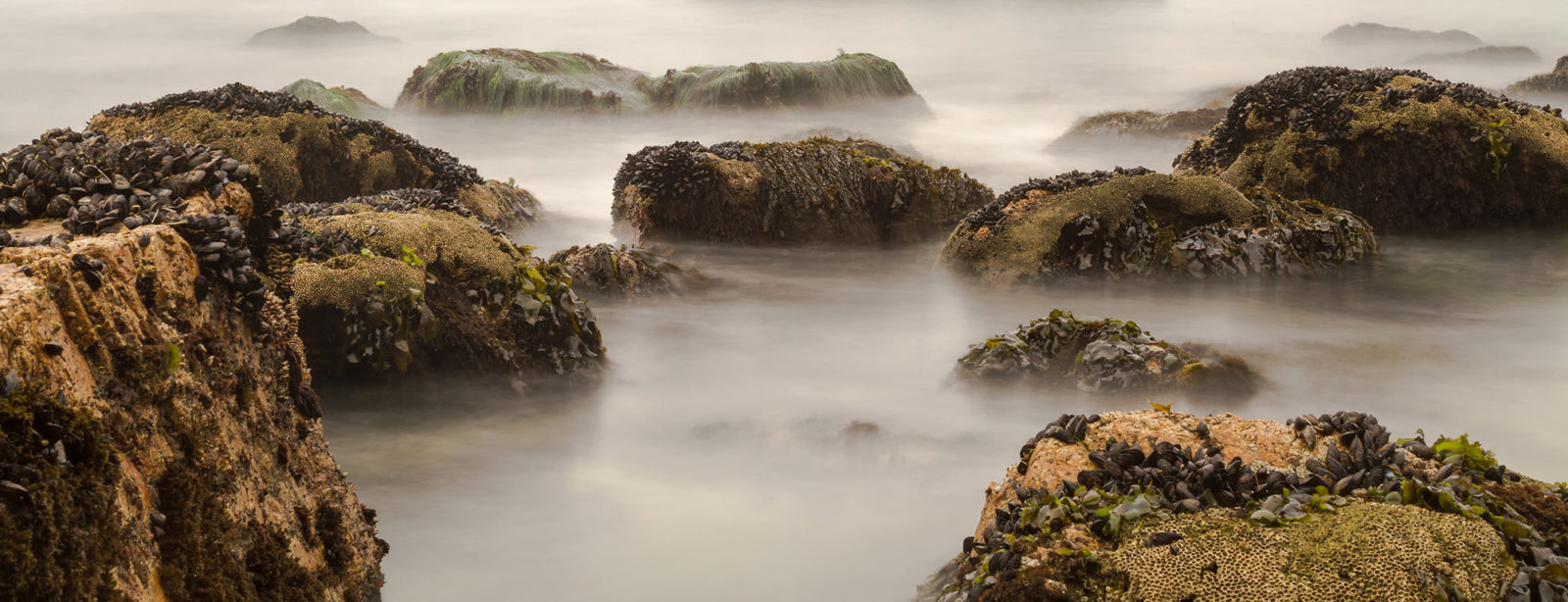I recently read, on a hankering for something old and stately, Willa Cather’s 1927 novel Death Comes for the Archbishop. It’s a beautiful book, filled with the strange geometric landscape of an 1850s New Mexico on the cusp of being settled by white people, all pueblos and mesas and clouds. Near the end is what the literary critic James Wood has called “some of the most exquisite pages ever written in American fiction.” The titular archbishop is close to death, and his caretakers sometimes call him back to the present moment with difficulty. But he isn’t infirm, Cather tells us, and his mind isn’t leaving him. Instead, “he was soon to have done with calendared time, and it had already ceased to count for him. He sat in the middle of his own consciousness; none of his former states of mind were lost or outgrown. They were all within reach of his hand, and all comprehensible.”
It’s a lovely and surprising idea. Instead of an inexorable declining towards death—a story of loss—the archbishop seems to gain a superpower in his old age: he can view his life in its totality, trying on past states of mind the same way a reader flips back through a book at will, and glean the wisdom and insight that come from a radical shift in perspective.
Something strikingly similar happens in geologist Marcia Bjornerud’s new book Timefulness: How Thinking Like a Geologist Can Help Save the World (2018, Princeton University Press). In a different kind of desert halfway across the world, on the Arctic archipelago Svalbard, Bjornerud recalls a research trip as a graduate student. “Lost in my thoughts on the long walks back to camp each day,” she writes, “I have sometimes felt as if I stood at the center of a circle, equidistant from all stages of my life, past and future.”
This—and, I think, what Cather’s archbishop experienced at the end of his life—is what Bjornerud calls timefulness. She describes it as “an acute consciousness of how the world is made by—indeed, made of—time,” an all-pervading sense that the past and the future are just as important and present as, well, the present. And unlike the archbishop, you don’t have to be on the brink of death to cultivate this way of seeing. Instead, Bjornerud says, a good grounding in the basics of geological thinking works just as well.
Actually, she argues in no uncertain terms, cultivating this sense of time is imperative. Our culture is afflicted with what she calls “a pervasive, stubborn, and dangerous temporal illiteracy”; it insists that right now is more important than any other moment in time. As she enumerates, in part, in a section called “A Brief History of Time Denial,” whole industries are built on our fear of growing or appearing old. There are literal time denialists, creationists who can’t accept that the Earth is far older than they insist it is, but none of us are immune because our society is practically built on right now, from political terms and fiscal year goals that encourage short-term thinking to “the low value we in the West place on process, development, and maturation,” continually shunting aside long-term investments like education. Then there’s our digital technology, which acts so instantaneously it “weakens our grasp on the structure of time.” And I think this might even understate how completely tech has changed our relationship with time (at least, from my vantage point in the heart of Silicon Valley): the way our feeds never actually end, the way we see unmediated news play out in real time (and feel like we’re out of touch if we haven’t heard about something a day later), the way reading anything for longer than five minutes becomes ever so slightly unbearable.
A more grounded view of time—zooming out and looking at the Earth’s entire life thus far from a remove—practically begs for saner, longer term decision-making for the future.
Besides a niggling sense that none of this can be good for us, why is this temporal illiteracy a problem? Because we need to understand the Earth more intimately than ever now, Bjornerud argues, as we change it in unprecedented ways (a fact that only becomes more terrifying the more you know about Earth’s long history). A more grounded view of time—zooming out and looking at the Earth’s entire life thus far from a remove—practically begs for saner, longer term decision-making for the future. And this perspective is something we can only get from acquainting ourselves with geology, Bjornerud posits, because “fathoming deep time is arguably geology’s single greatest contribution to humanity.”
I will confess now that she’s preaching to the choir here. I’m what you might call a geologist manqué: I majored in geoscience in college and spent a happy year studying Paleozoic marine fossils before graduating and decamping for journalism. I never really considered a career in science, though. I chose to study rocks and long-dead animals because it delighted me, because there was something magical about the idea of scanning a rock formation or a landscape and reading it to discover what mighty things had happened in its past. “Rocks are not nouns but verbs,” Bjornerud writes—a record of action.
So I’ve had a taste of “the mind-altering sense of time and planetary evolution that permeates geological thinking.” It’s hard not to have your perspective changed, to see the world completely differently from the way you’re used to, when a million years is the smallest unit of time you consider. (The Earth is 4.5 billion years old, and geological eras like the Mesozoic (the age of the dinosaurs) and the periods within them (like the Jurassic) are split up into manageable chunks of millions of years—186 million years and 56 million years, respectively.) It’s easy for people to hear about fossils and rocks and dinosaurs and get lost in just how old everything is—we are notoriously ill-equipped to deal with large numbers—but geology lets you turn that sweeping feeling of immensity into discrete concepts and numbers that are easier to talk about level-headedly. “Most humans … have no sense of temporal proportion,” Bjornerud writes. “The durations of the great chapters in Earth’s history, the rates of change during previous intervals of environmental instability, the intrinsic timescales of ‘natural capital’ like groundwater systems.”
Bjornerud writes so compellingly about how important “a feeling for distances and proximities in the geography of deep time” is that I found myself wanting to better my own understanding—which is why I found the middle chapters of her book, where she endeavors to give readers a sense of those relationships, disappointing. A chapter called An Atlas of Time, named for the overarching geologic timescale Bjornerud calls a “‘map’ of Deep Time,” plunges into the history of geology and the century-plus-long quest to determine, once and for all, the age of the Earth. It introduces us to James Hutton, the 18th century Scottish naturalist who essentially founded the science, takes us through Darwin and Lord Kelvin’s competing calculations for Earth’s age, and devotes pages of eye-crossingly meticulous description to various flavors of radioisotope dating.
What the chapter doesn’t do is give me an actual sense of the geologic timescale. Which was frankly bewildering. If our goal is to understand time’s topography, shouldn’t we first scrutinize the map as a whole and familiarize ourselves with the locations of its prominent landmarks to orient ourselves, instead of learning about how cartographers created the map in the first place? Another chapter, dedicated to the rates of geological processes, returns over and over again to the question of how quickly mountains form and erode. But it’s never made clear why we’re focusing on mountains specifically, as opposed to other geologic features that she mentions in passing. Ironically, what I felt was most lacking was guidance, however brief, on how to put all the information Bjornerud was throwing at the reader into perspective—the very thing she upholds as crucial.
Granted, the very challenge of boiling down all of the precepts of Earth’s processes and past into a 181-page book only supports Bjornerud’s point that it is a vast and mysterious planet we desperately need to understand better. And her broader descriptions of the character of geologic time are enlightening. A useful way to think about how fast things change on Earth, for instance, is to understand that most of the time Earth’s processes work just as slowly today as they did in the past, but those periods of relative calm are punctuated by events that can wreak geologic change with great suddenness. “The lingering nineteenth-century belief that Earth changes only slowly has lulled us into thinking that it is impassive and eternal, that nothing we do could alter it significantly,” she writes. “We are big enough now to scratch and dent the Earth, scar and abrade it, but we ourselves will have to live with the damage.”
The threat of climate change is the animating force of the book, and it’s where this sort of broad geological view is most effective—and frightening. “There is an immense asymmetry,” Bjornerud writes, “in the time it takes to consume, alter, or destroy natural phenomena compared with the time required to replace, restore, or repair them,” and the odds are not tilted in our favor. More to the point, there’s also “an inescapable asymmetry in Earth’s climate system: it takes a lot longer to cool the planet than to warm it up.” Past mass extinctions tell us that when the pace of environmental change outstrips the pace of evolution (two processes that are ordinarily well-matched), bad things happen: animals have “suffered spectacularly whenever [their] environments, and especially the atmosphere, changed too fast.” Then she points out that by 1960, the amount of carbon dioxide in the atmosphere had risen “as much in 160 years as it had over the previous 11,000,” and that “the last time CO2 concentrations were this high was Pliocene time, more than 4 million years ago.” Earth’s climate was unusually stable during the Holocene, the epoch when recorded human history began, and “this stability is arguably the very thing that allowed humans to build civilizations at all.”
Grappling with the nature of geological time, then, means grappling with the fact that humanity is crushingly fragile. Ultimately, this is what thinking about deep time teaches us: it pushes us as a species to understand our actions, take responsibility for them, plan wisely for the future, and face mortality— all of which sound suspiciously like markers of mature adulthood. (Think hard enough about geology and suddenly you find yourself doing philosophy.) In her last chapter, Bjornerud wisely suggests that to promote timefulness “we need spaces where, from an early age, children see that they are on an ancient, sacred path that stretches across time…that growing up and growing old are to be celebrated, not feared.” Let’s hope that the rate of our growing up eventually outstrips the rate at which we change the planet.





